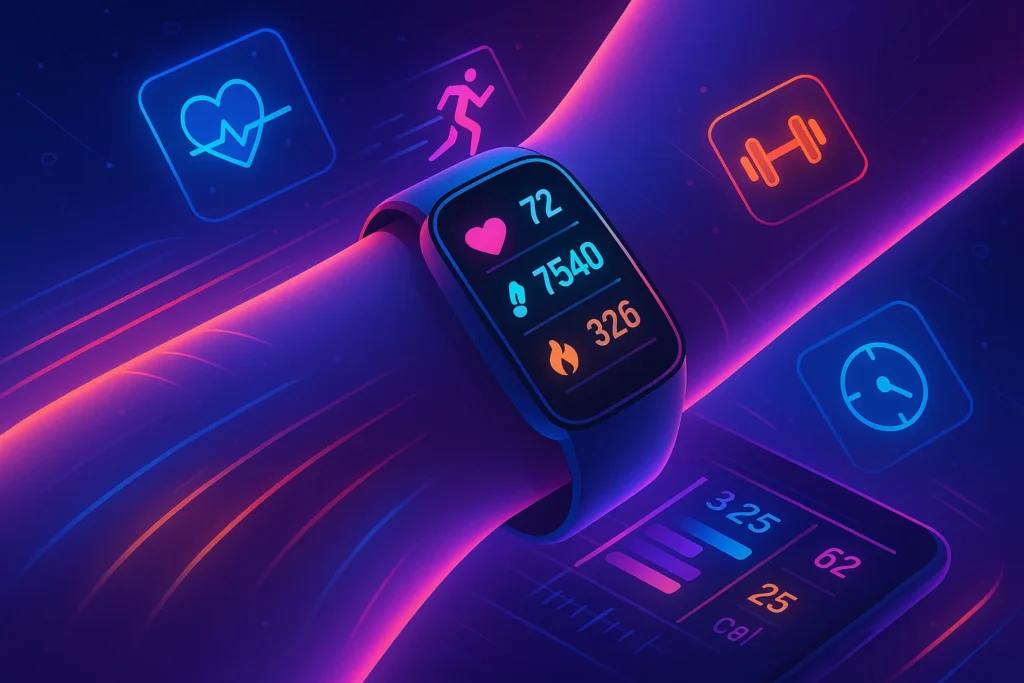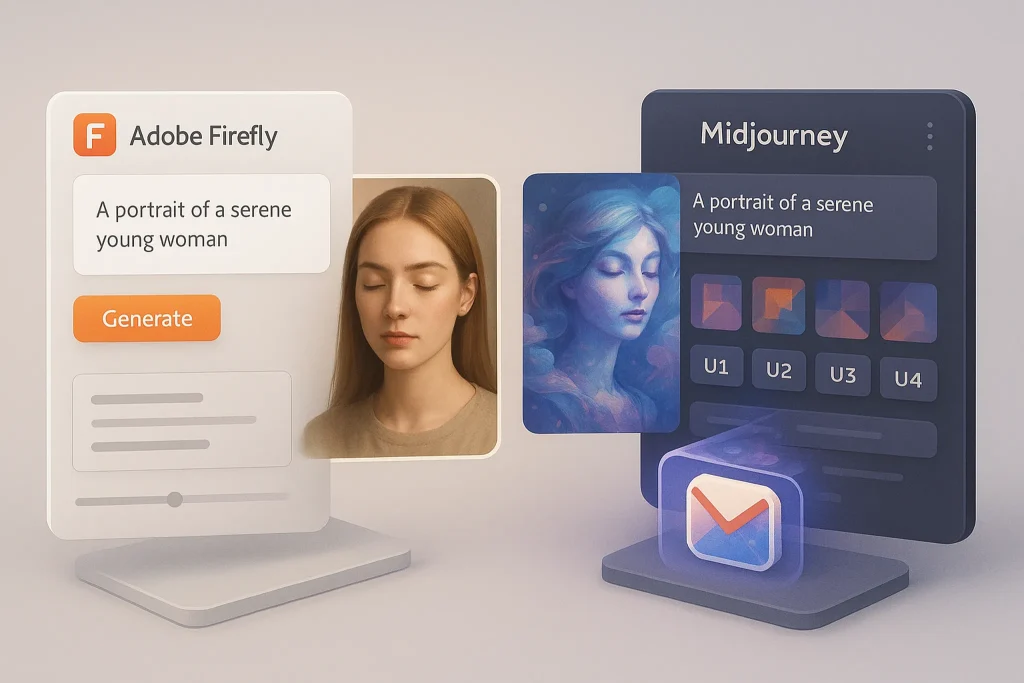Introduction: Fitness Tracking in 2025
Fitness trackers have come a long way from counting steps and buzzing reminders to move. In 2025, they’re mini health hubs—tracking heart rhythms, stress, sleep stages, and even giving guided workouts. The Fitbit Charge 6, Google’s latest iteration of its best-selling fitness band, positions itself as the sleek middle ground between budget-friendly trackers and bulky smartwatches.
The question is: does the Charge 6 live up to its promise of providing accurate health insights without the extra weight (and cost) of a full smartwatch? Or is it time to move on to flashier alternatives like the Apple Watch Ultra 2 or the discreet Oura Ring Gen 3?
This review dives into every aspect—design, sensors, accuracy, usability, and long-term value—to help you decide if the Charge 6 deserves a spot on your wrist.
💡 Think of this as more than a gadget review—it’s a guide to whether the Charge 6 fits your lifestyle goals in 2025.
Design and Comfort
At first glance, the Fitbit Charge 6 doesn’t scream “new.” It inherits the slim, rectangular look of its predecessor, the Charge 5, but polishes it with refined materials and smoother transitions between screen and band.
Where it shines is comfort. The lightweight design makes it feel more like a bracelet than a gadget, which is critical for 24/7 wear. Whether you’re typing at a desk, lifting weights, or sleeping, it avoids the bulky discomfort that many smartwatches bring.
The AMOLED screen is brighter and sharper, ensuring readability outdoors during a run or under harsh gym lighting. Touch responsiveness feels fluid, making it easier to swipe between stats and notifications.
For those who want a tracker that blends into daily wear instead of looking like a tech badge, the Charge 6 delivers understated elegance.
Fitness Tracking Accuracy
Accuracy is the soul of any fitness tracker. The Charge 6 uses updated heart-rate sensors, leveraging Google’s machine learning algorithms for better precision during high-intensity workouts. In practice, this means fewer “spikes” or dropouts when transitioning from rest to activity.
Step counting remains solid, though not dramatically improved from the Charge 5. GPS tracking, now with faster satellite lock and improved calibration, makes outdoor runs more reliable. Runners and cyclists will appreciate the reduced drift in route mapping.
Fitbit also expands compatibility with gym machines. Thanks to Fitbit’s integration with Google Fit and third-party workout apps, you can sync directly with treadmills, rowing machines, and Peloton bikes. This ecosystem play makes it appealing for fitness enthusiasts who already juggle multiple platforms.
👉 If running is your focus, comparing this with the Apple Watch Ultra 2 Review for Runners helps clarify whether you need a band or a full-fledged smartwatch.
Health Features Beyond Steps
The Charge 6 isn’t just about calories and steps. It doubles as a wellness companion:
-
Stress Tracking: Uses electrodermal activity (EDA) sensors to measure skin responses linked to stress. Paired with guided breathing exercises, it’s a valuable mental health tool.
-
Sleep Monitoring: Fitbit has long excelled here, and the Charge 6 adds more granular REM/deep sleep analysis. Paired with snore detection, it becomes a serious competitor to smart rings that track sleep & fitness.
-
Heart Health: Beyond continuous heart-rate tracking, it includes ECG functionality for irregular rhythm detection. This feature rivals medical-grade wearables and provides peace of mind for users at risk of AFib.
-
SpO2 and Temperature Sensors: Useful for monitoring overall wellness and spotting early signs of illness or overtraining.
These features aren’t just “nice to haves”—they’re signals that fitness bands are maturing into holistic health devices.
🎨 Comparison Snapshot
| Feature | Fitbit Charge 6 | Apple Watch Ultra 2 | Oura Ring Gen 3 |
|---|---|---|---|
| Form Factor | Slim band | Full smartwatch | Smart ring |
| Best For | Daily fitness + wellness | Endurance athletes | Sleep + discreet tracking |
| Battery Life | 6–7 days | 2–3 days | 5–7 days |
| Key Strength | Balanced features, comfort | Advanced training metrics | Sleep accuracy, discretion |
📌 Use this table as a quick orientation. The Charge 6 sits comfortably as the all-rounder option for most users.
Battery Life
One of Fitbit’s long-standing advantages over smartwatches is battery longevity. The Charge 6 continues this tradition, lasting 6–7 days on a single charge with moderate use. GPS-heavy workouts and continuous health monitoring shorten this to around 4–5 days, but that’s still far beyond what most smartwatches deliver.
Fast charging brings it back to near-full in under an hour—a huge plus if you rely on it for sleep tracking and can only spare short charging windows during the day.
💡 Battery longevity isn’t just about convenience—it’s about habit consistency. A tracker you don’t have to constantly recharge is one you’ll actually use 24/7.
📬 Want Smarter Fitness & Health Tech Reviews?
Join our free newsletter and get weekly insights on fitness gadgets, wellness apps, and future tech shaping health in 2025.
No spam. Just actionable tips and reviews.
🔐 100% privacy. No noise. Just value-packed insights from NerdChips.
Usability and Ecosystem
Fitbit’s app ecosystem remains user-friendly and motivational. The Fitbit app displays data in clean charts, offering trend insights rather than just raw numbers. Weekly readiness scores help users understand whether their body is primed for workouts or needs recovery.
Google’s ownership now shows in integrations. Google Wallet and YouTube Music controls are available on the Charge 6, blurring the line between tracker and smartwatch. While it won’t replace your phone, these additions enhance convenience.
The Fitbit Premium subscription, however, remains a double-edged sword. While free users get robust basics, deeper insights and guided programs are paywalled. For serious fitness enthusiasts, Premium adds value, but casual users may see it as an unnecessary cost.
👉 For a broader look at how wearables are shaping wellness, check out our guide on Tech for Fitness: Best Gadgets to Track and Improve Your Health.
Strengths and Weaknesses
Every gadget has trade-offs. The Charge 6’s strengths lie in its balance: accurate health tracking, great battery, and lightweight comfort. Where it stumbles is in smartwatch-level versatility. Notifications are basic, app support is limited, and advanced athletes may outgrow its metrics.
🎨 FVL Checklist for Buyers:
-
✅ Do you want all-day comfort and sleep tracking? → Charge 6 shines.
-
✅ Do you need advanced running dynamics? → Consider Apple Watch Ultra 2.
-
✅ Do you prefer ultra-discreet wearables? → Explore the Oura Ring Gen 3 Review After 6 Months.
-
✅ Do you need productivity integration? → You might even consider pairing fitness with one of the Best Smart Calendar Apps for Productivity.
🧠 Nerd Pick
Looking for a reliable fitness tracker that blends health accuracy, comfort, and battery life without smartwatch bulk? The Fitbit Charge 6 is one of the strongest options in 2025.
👉 Check the latest Fitbit Charge 6 prices and bundles here
Setup & Onboarding Experience
A good fitness tracker should feel accessible from the very first moment you unbox it, and the Charge 6 does a solid job here. The initial setup process is straightforward: download the Fitbit app, pair via Bluetooth, and you’re walked through a quick calibration. Within 10 minutes, your tracker is synced, your profile is built, and you can already start logging steps and workouts.
Fitbit has added more guided prompts this year, including quick tutorials on how to use ECG readings or access sleep scores. This makes it beginner-friendly while still allowing advanced users to customize metrics and dashboards. Google integration also means you can immediately link your Google account for backups, making switching devices or restoring data painless.
💡 First impressions matter. The Charge 6 gets you from box to wrist-tracking with minimal friction—ideal for new users who don’t want setup headaches.
Third-Party App Integrations
One of the standout improvements in the Fitbit Charge 6 is its growing compatibility with third-party apps. Fitness enthusiasts often rely on ecosystems like Strava, MyFitnessPal, and Google Fit to centralize their data. The Charge 6 syncs seamlessly, ensuring your run metrics or nutrition logs aren’t siloed.
For athletes who track cycling or advanced workouts, Strava integration is especially valuable, letting you overlay GPS maps and heart-rate zones for deeper analysis. Nutrition-conscious users can log meals in MyFitnessPal and see how calorie intake matches against daily activity data from Fitbit.
This interconnected approach turns the Charge 6 from a “step counter” into a central hub that supports your broader health ecosystem. It acknowledges that serious users don’t live in one app—they thrive on synergy.
Comparison to Previous Models (Charge 5 vs Charge 6)
Upgrading from the Fitbit Charge 5? The Charge 6 refines the formula in several ways:
-
Heart-Rate Accuracy: Leveraging Google’s AI algorithms, it delivers more consistent readings, especially during HIIT or interval workouts where older models often lagged.
-
Faster GPS Lock: Outdoor workouts begin quicker with improved satellite acquisition.
-
Expanded Google Features: Wallet payments and YouTube Music controls bring smartwatch-like conveniences that Charge 5 lacked.
-
Screen Brightness: The AMOLED display is noticeably sharper and more visible in direct sunlight.
While the design is similar, these functional upgrades make daily use smoother. For current Charge 5 owners who value precision in heart-rate and ecosystem perks, the upgrade feels justified.
Fitness Tracking for Specific Use Cases
One of the best things about the Charge 6 is its versatility across fitness styles:
-
Runners: The improved GPS accuracy and real-time pace data make it reliable for outdoor runs. Heart-rate tracking also supports HR zone training for better endurance planning.
-
Strength Training: Automatic workout recognition logs weight sessions, though rep counting can be hit-or-miss. Still, heart-rate recovery metrics help gauge session intensity.
-
Yoga & Meditation: With EDA sensors, the Charge 6 offers mindfulness sessions and breathing guides, giving mental health as much attention as physical.
-
Cycling & HIIT: Syncs seamlessly with gym equipment, letting you track power and cadence more effectively than past models.
This multi-sport flexibility makes it appealing not just for casual users, but also for fitness enthusiasts juggling diverse routines.
Privacy & Data Ownership
In the era of connected health, data privacy is a growing concern. With Fitbit now under Google’s umbrella, many users worry about how their health data is used. The good news: Fitbit allows you to control what’s shared and even lets you download or delete your health history at any time.
Data is encrypted in transit and at rest, ensuring sensitive metrics like heart rhythm or sleep cycles aren’t casually exposed. While anonymized data can feed into product improvements, individual health details remain private unless you explicitly share them with third-party apps.
Transparency matters, and Fitbit provides clear settings to opt in or out of data-sharing. For users mindful of digital health privacy, this control is a reassuring safeguard.
Value for Money Against Competitors
At its mid-range price point, the Charge 6 sits in an interesting spot. It’s significantly more affordable than premium smartwatches like the Apple Watch Ultra 2 but more advanced than entry-level fitness bands. Compared to the Oura Ring Gen 3, it offers broader fitness features beyond sleep, while still keeping a slim form factor.
-
Versus Apple Watch Ultra 2: You lose advanced endurance metrics and app depth but gain nearly triple the battery life at a fraction of the cost.
-
Versus Oura Ring: You gain richer exercise tracking and an on-wrist display, though the ring still leads in discreet sleep monitoring.
-
Versus Galaxy Fit or budget bands: You get higher accuracy, premium build, and wellness features not found on cheaper alternatives.
For most users, the Charge 6 strikes a value sweet spot—a capable all-rounder that avoids smartwatch bulk and overpriced ecosystems.
🧠 Nerd Verdict
The Fitbit Charge 6 is a thoughtful refinement rather than a radical reinvention. It proves that fitness bands still have a place in 2025, even as smartwatches and rings gain popularity. Its strengths—battery life, comfort, and balanced health features—make it one of the best-rounded fitness trackers available.
If you’re an endurance athlete or smartwatch power user, you may look elsewhere. But for most people seeking a health companion that quietly supports daily routines, the Charge 6 is a near-perfect fit.
❓ FAQ: Nerds Ask, We Answer
💬 Would You Bite?
Would you choose a slim, focused tracker like the Fitbit Charge 6 over a full smartwatch—or do you prefer the all-in-one approach of premium wearables?



